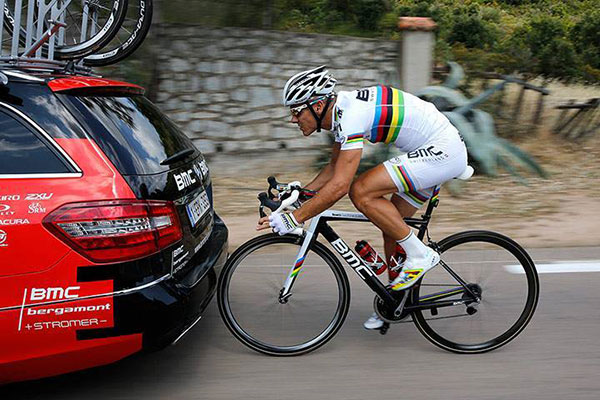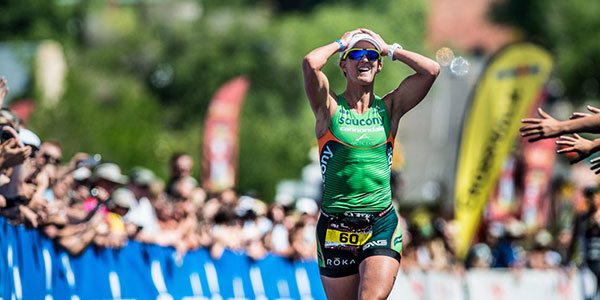Crossing the finish line of a triathlon can be a powerful experience. It not only represents the culmination of the hours you’ve spent on the course during race day, but the weeks or months you’ve spent training your body to perform. Even for us who just race for personal records, the joy is in the journey, not the finisher’s medal. But that’s pretty cool, too.
Your work probably feels like an endurance sport at times, with an emphasis on the “endurance” part instead of the “finish line” part. So, why not try looking at your next project through a different lens? A challenge to be faced, a finish line to be crossed? To that end, let’s go through a triathlon together and see what we can learn that might give us a new perspective and more motivation!
The Swim:
Nothing rattles a newbie’s nerves like the prospect of hopping into a large body of water with hundreds of strangers (and their elbows and feet). Even experienced athletes experience severe butterflies! At this point, the whole day stretches out before you, and all your insecurities and doubts creep back into your mind like freezing water into a wet suit zipper. Triathlons cannot be won during the swim leg, but they can definitely be lost.

Yes, triathletes can sometimes look like a bunch of aliens. Source: happeningindtla.com
1. Just get in!
At this point, you have the skills and the training, your body knows what to do — it’s just your mind that needs convincing. Now is the time to summon the courage to stop over thinking it and get in the water. You body will tell your mind “we’re doing this, so you better keep up.”
2. Set your sights.
The human body is not perfectly symmetrical, and your swim stroke probably far from it as well. Without that black line on the bottom of the pool to guide you, your route through the ocean or lake could be more of a zigzag than a straight line. This is why triathletes build “sighting” into the rhythm of their strokes. By lifting your head out of the water and eyes front, you can lock onto a fixed point to ensure you stay on course. It’s not the finish line, of course, but it’s a milestone that you can use to assess your progress and achieve a small victory along the way.
The Bike:
Congratulations, you’re out of the water, but not out of the woods. So throw your leg over that bike and let’s go. A triathlon cycling leg can follow two models, draft-legal or non draft-legal, and each comes with its’ own advantages and challenges.

How close is too close? Source: imgur
1. Draft legal:
Drafters go faster. A rider “on the wheel” of another rider can expend as much as 30-40% less energy, while maintaining the same speed as the rider in front. The first rider creates an air-pocket that enables the fearless follower to be sheltered from the wind — one of the main factors keeping you from optimal speed. This effect is compounded with more riders. This is called a Peloton in road racing. Is this cheating? Yes. No. Sort of. It depends on your school of thought, but one thing is clear — if you don’t take your turn at the front, you’re gonna have some angry riders in your group. It’s ok to benefit from the collective strength of a team, but you can’t expect to hide there all day. Pull your own weight.
2. Non-draft legal:
This is where a man or woman actually IS an island, all alone with the sun and pavement and headwinds and cross-winds. There is no hiding here, there is only individual performance, made as efficient as possible. The key is to maintain an “aero” position for the majority of the bike leg. This requires hours and hours of practice, there is no aero-expertise without putting in the work in the saddle.
The Run:
1. Nail the transition.
Switching gears will always throw us for a loop, in life or in a triathlon. “Transition” in triathlon is both a physical place and a verb. It’s the area between each leg, where you change your clothes, grab your fuel and take off for the next leg. A smooth transition doesn’t just happen. It, too, requires forethought and practice. During the swim, you can use your legs as little as possible to prepare yourself for the cycling leg. During the bike, you can spend the last mile or two stretching your hamstrings to be ready for the run. Saving time in transition means more time on the course.
2. Time to endure.
Running is hard enough on a Saturday morning, but after hours of swimming and cycling, it can be a real struggle. It’s at this point when every single athlete on the course is hearing “please stop” from their legs. The ones who finish first are the ones who ignore that voice. At this point of the race, you’ve achieved several personal goals. Your training has made you healthier and fitter — you’ve become mentally stronger. But the last goal – the finish line – was the one that started you on this journey. Get there.

It feels like this. Source: ironman.com
Triathlons come in many shapes and sizes, but the principles are the same: push your body and mind further than you thought they could go. Change how you define yourself. Set a new baseline. As we get older, our minds tend to jump to “what could go wrong” before “what is possible,” and a triathlon is one of many ways to reverse that. So put your pain in perspective, align the journey with a clear purpose, and above all, don’t forget to celebrate the victories. You’ve earned them.







